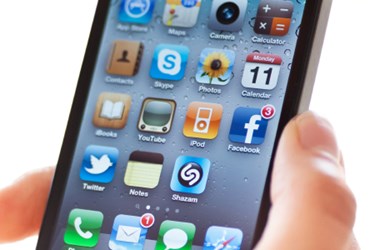The Evolving Landscape Of Medical Apps

By Christine Kern, contributing writer

Healthcare providers must adapt to the new patient-centric environment.
As pharmaceutical companies begin to offer cutting edge healthcare services, a report by HIT Consultant with graphs from Pocket.MD has added color to the biggest mobile health app developers among pharmaceutical companies. The report charted the number of medical apps big pharma companies have produced and calls attention to conditions that have captured the most attention in the mobile health space.
The healthcare landscape has been transformed by handheld medical devices. Although medical devices with embedded software have existed for over 20 years, the advent of smartphones with touch screens, smart Bluetooth technologies, and internet connectivity has brought about a tsunami of apps designed for every purpose, from monitoring body temperature to measuring heart rate. Today’s medical apps are becoming increasingly smarter, multi-functional, and user-friendly.
This means healthcare and life science companies are switching their focus from medical equipment and devices for hospitals and doctors to mobile apps, the majority of which are intended for direct use by consumers and patients rather than doctors and caregivers. This has created a paradigm shift in people’s perception of healthcare by making healthcare more accessible to patients. It also requires a transition in the way healthcare providers approach their patients.
Today, there are nearly 43,700 medical apps available in the Apple store alone. However, consumers should be aware that not all medical apps are genuine healthcare apps. Only about 54 percent of medical apps available on iTunes are genuine healthcare apps, according to a report co-authored by Murray Aiken, executive director of the IMS Institute of Healthcare Informatics.
The same report states that 69 percent of apps are intended for consumers and patients, while 31 percent are intended for clinical use. The majority of apps intended for consumers are simplistic in design, and do little more than provide information. Only 159 of them have the ability to track or capture data entered by the user, and fewer than 50 provide calculators or tools for users to measure their vitals.
In terms of mobile app evolution, there are three waves: maturing apps to assist care providers, evolving apps for patient support, and emerging apps for care monitoring. While wave one apps are of a more informal nature, wave two apps are passive to active and wave three apps work in real time. HCP tools lead the way with an 11 percent market share, followed closely by medical reference, animal health, medical meeting, healthy living, diabetes, and corporate apps.
The medical app market, not surprisingly, is dominated by the big players, who wield the resources to create the best apps and the financial muscle to push their products in the market. The lion’s share of the medical apps market is occupied by established companies with historically strong brands. Bayer leads the pack with 11.2 percent market share, followed closely by Merck, Novartis, Pfizer, and Boehringer Ingelheim.
In terms of platforms (devices), the Apple iPhone is by far the leader, with 48.2 percent of the market share, followed by the iPad, then Android, Blackberry and Windows phones.
Some 95 million Americans used their mobile phones as healthcare tools, or to search for healthcare related information in 2013, a 27 percent jump from 2012, according to research done by New York-based healthcare marketing research firm Manhattan Research. Predictions project that, at the rate at which the medical apps are growing, the market will be worth is $26 billion in the US alone by 2017.
This growth is being driven by convenience on the part of patients, who can no monitor their chronic conditions such as diabetes and asthma at home, greatly reducing the need for readmission. Caregivers benefit from the ability to make informed decisions faster in order to improve the outcome. And ultimately, most consumers are attracted to the patient-centric approach to healthcare, putting some of the powers of a doctor into their own hands. Ultimately, healthcare providers will have to adapt to this changing landscape and embrace the mobile apps as they create value-based, patient-centric environments of care.
